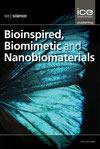A strong system of magnetic nanocatalysts in absorbing and releasing ampicillin along with its antibacterial properties
IF 0.6
4区 工程技术
Q4 ENGINEERING, BIOMEDICAL
引用次数: 1
Abstract
Background: Magnetic nanoparticles are the main source of synthesis and design of magnetic nanocatalysts, which are obtained from iron salts by chemical co-precipitation method. Objective: The main goal of this research is to investigate the absorption, release and antibacterial properties of magnetic nanocatalysts with silica coating and silica/amine linker. Methods: The structure of the obtained nanocatalyst is detected by several analyzes such as SEM, TEM, EDX and IR. Results: Here is reaction between the ampicillin 10 µl (25 µg/ml) and the Fe3O4@SiO2 and Fe3O4@SiO2/NH magnetic nanocatalyst 200 mg (2 mole%), under 25°C and double distilled water. In this way, the amount of absorbed ampicillin on MNPs@silica/amine structure in covalent is more than MNPs@silica structure in non-covalent bonding, i.e. 85 to 65%, but the rate of release in non-covalent is above 90%, but in covalent is less than 80%. Also, the bactericidal properties of nanocatalysts have been tested separately at a temperature of 37 degrees for the non-covalent type are more than 80% compared to Covalance form is 70%. Conclusions: The overall result was that the percentage efficiency of the absorption/release reaction in the non-covalent bonding state was much better and about 10% more release.一个强大的磁性纳米催化剂系统吸收和释放氨苄西林及其抗菌性能
背景:磁性纳米颗粒是合成和设计磁性纳米催化剂的主要来源,它是由铁盐通过化学共沉淀法获得的。目的:本研究的主要目的是研究具有二氧化硅涂层和二氧化硅/胺连接体的磁性纳米催化剂的吸收、释放和抗菌性能。方法:采用扫描电镜、透射电镜、能谱仪、红外光谱等分析手段对所得纳米催化剂的结构进行了表征 µl(25 µg/ml)和Fe3O4@SiO2和Fe3O4@SiO2/NH磁性纳米催化剂200 毫克(2 摩尔%),在25°C和双蒸馏水下。通过这种方式,对氨苄青霉素的吸收量MNPs@silica/共价胺结构超过MNPs@silica非共价键中的结构,即85%至65%,但非共价键的释放率在90%以上,但共价键的小于80%。此外,已经在37度的温度下单独测试了纳米催化剂的杀菌性能,与Covalance形式的70%相比,非共价型的杀菌性能超过80%。结论:总的结果是,在非共价键状态下的吸收/释放反应的百分比效率要好得多,释放率高出约10%。
本文章由计算机程序翻译,如有差异,请以英文原文为准。
求助全文
约1分钟内获得全文
求助全文
来源期刊

Bioinspired Biomimetic and Nanobiomaterials
ENGINEERING, BIOMEDICAL-MATERIALS SCIENCE, BIOMATERIALS
CiteScore
2.20
自引率
0.00%
发文量
12
期刊介绍:
Bioinspired, biomimetic and nanobiomaterials are emerging as the most promising area of research within the area of biological materials science and engineering. The technological significance of this area is immense for applications as diverse as tissue engineering and drug delivery biosystems to biomimicked sensors and optical devices.
Bioinspired, Biomimetic and Nanobiomaterials provides a unique scholarly forum for discussion and reporting of structure sensitive functional properties of nature inspired materials.
 求助内容:
求助内容: 应助结果提醒方式:
应助结果提醒方式:


